The Harmony of Bill Evans (2a) PERI’S SCOPE – HARMONIC ANALYSIS
“Peri’s Scope” is a perfect model to initiate a discussion of two-handed piano voicing principles that are root oriented. There are three rules or directions to follow:
- Use the root, third and seventh under the melody;
- Omit the fifth of the chord;
- For added, optional color, add a ninth, eleventh, or thirteenth
Best Sheet Music download from our Library.
Observe in all of the examples that the root is always the bass note and above the root you place the third, seventh, and melody. The voice leading alternates-EX. 1: R (root), 3rd, 7th leading to R, 7th, 10th in measures 1 and 2; or R, 10th, 7th leading to R, 7th, 10th in measure 3- depending upon the root movement.
In this tune the root movement is mostly down a fifth ( or up a fourth, i.e. II-V, III-VI of measures 1 & 2). I call this the diatonic cycle of fifths, and since “Peri’s Scope” does not modulate to another key, I rate it as a very imaginative diatonic composition for that reason.
Bill had a composer’s ear for variety and learned how to effectively use secondary dominants (see measures 7, 8, 14, 15, 16 & 20). This makes Peri’s Scope a challenge to the improviser. The challenge is unique because you meet the secondary dominants in different ways and in different parts of the phrase.

For example, in EX. 2 below, the IIIx (E secondary dominant seventh) lasts for two bars (7 & 8) and it’s the climax of the first phrase of the tune. It’s very sudden. It jumps out at us.

E7 (Sec. Dom.) E7 FMa7
From Bar 1 to 6 all we heard were diatonic chords in C Major, then “boom!”, we’re hit with an E713 for two bars. A real surprise. Look at EX. 2 and see and hear the colors:1 .E713, then E7b13, then E7 and finally E7+ 11 !!
At the end of the second phrase ( also eight measures), EX. 3 measures 14, 15 & 16, we meet three secondary dominants in a row, B713 to E9+11 to A713!!! The alterations on the Illx at measure 15 begin to look and sound like its tritone substitute, a B flat dominant seventh +5.
It is at this point the improviser has a choice to use one or the other: an E913 or Bb9+5. Here the progression becomes chromatic if you use the Bb9 and remains diatonic if you use the E911.
In this second phrase, measures 14-16, the improviser has a choice to think diatonically by using B7 to E7 to A7, or chromatically B7 to Bb7 to A7. A chromatic progression is one in which the root of the chord lies outside the key signature of the tune. All others are diatonic progressions.

In phrase three, at bar 20 of the final e1ght measures (EX. 4), we meet a secondary dominant for one-half of the measure only. It is the Vlx (A7b13) again on the 3rd and 4th beats. In Bill’s improvisation in this measure he plays B-flats, revealing to us that the chord on the downbeat of measure 20 is an E minor 7bs, a III half-diminished. It is only implied in this arrangement. The symbol for half-diminished is 0. The symbol x stands for secondary dominant.

In EX. 5, we can see at a glance how imaginatively Bill used the secondary dominants in different parts of each phrase. Here’s a look at the phrases by measure -number. – It will give you a quick overview of whererhe secondary dominants occur.
EX. 5 Peri’s Scope
Phrase One (measure s 1-8)

When I teach tunes, especially Bill’s, I always analyze the phrase structure first, then the key changes, if any (modulation principles), and then the use of secondary dominants, how they resolve and their duration. For example, the A7′ sat measures 16 and 20 resolve to the D minor chord, and we can infer that it is borrowed from the region or scale of D minor, which is only one flat removed from C Major, the scale or key of “Peri’s Scope.”
In other words, the A7 suggests the key, the scale or “the region of” D minor, which is very closely related to the tonic key of C Major. I include in my thinking the relative major keys when discussing minor key relationships and relative minor keys when discussing major keys.
This sounds confusing, I know, but as I analyze other compositions by Bill, you’ll begin to grasp the principles I’m trying to explain. In fact, if you pick up the Theory of Harmony by Arnold Schoenberg, you will find out where Bill learned these principles and you’ll be able to follow my explanations more intelligently.
Now go back and look at EX. 2, measures 8 & 9. The E7 at measure 8 resolves to an F Ma7 at measure 9. This E7 is borrowed from the scale of A minor, the relative minor of C Major, and it resolves deceptively, i.e. V to VI, or up a half step” as if” it were in the key of A minor.
These are important considerations when studying this tune in terms of its horizontal or linear implications. We know that E7 is the dominant of A Major and A minor. But we probably wouldn’t improvise on an A major scale at this point for two reasons: 1) the chords surrounding the E7 do not suggest a progression in A major, and 2) the resolution at measure 9 would have to be to an F# m7, the VI of A major, a deceptive resolution in the key of A major!
Let’s get back to the voicing concepts. In EX. 2, measures 7 & 8, the voicing of the E7 is root, 7th, 10th (or 3rd), and in measure 9, the F Ma7 and G7 voicings are the same (R, 7th, 10th) because the root movement is stepwise, lllx to IV to V. When progressions move by steps (IV-V or 11-111, etc.), you can often move or lead the voices parallel. This makes for smoothness and clarity in the rendition of the tune. Any song will lend itself to this treatment. I call this the 3-note voicing concept and I learned it from Bill’s model, “Peri’s Scope.”
In EX. 3, measure 14, the B7 is voiced root, 7th, 10th resolving to E7. The E7 here is the only voicing in our model that has no root. Or does it? I think Bill meant Bb7+5 at this point (last beat of measure 14). The B-natural in the bass was supposed to be a B-flat but was delayed to the next bar, measure 15, second beat.
What do you think? If you accept my analysis, then the voicing to the Bb7 is parallel -R, 7th, 10th-and the resolution from Bb7 to the A7 in measure 16 is also parallel-R, 7th, 10th. Here’s a look at these three chords in isolation (EX. 6). Play them!

In EX. 7, measure 11, we see another variation in Bill’s voicings, and a very simple one at that. He reduces the left hand voicing to two notes: Rand 7th on the downbeat (D m7) and then R, 3rd on the third beat (G 7), while the melody in the right hand is harmonized in thirds. This gives us relief from the five part voicings in phrase one.
Later performames of this piece, Bill changed measure 12 to Gm 7, C7, suggesting that the middle phrase (phrase two, measures 9-16) can be heard as a modulation to the key of F Major, a very closely related key to C Major, one fifth down and one flat away from C Major.

These root-oriented 3-note voicing concepts formed the foundation of Bill’s early style and permeated his later playing, as you will see in my analysis of tunes like “B Minor Waltz.”
Please, subscribe to our Library.
If you are already a subscriber, please, check our NEW SCORES’ page every month for new sheet music. THANK YOU!
In EX.8, measures 20 & 21, we observe more variety, the block chord voicing with melody on top and bottom. Bill knew his jazz piano history. I heard him play Boogie Woogie and Teddy Wilson styles in 1951. The block chord influences are from Milt Buckner and George Shearing.

And Bill even knew how to “sit” on the quarter note a la Lester Young at measure 19 to make it swing in the old style ( EX. 9). Listen to Lester Young’s solos on “Taxi War Dance” or “Blue Lester” with the Count Basie Orchestra for the quarter note swing “feel.”

Notice the Boogie Woogie influence in the left hand of measure 19, the ultimate in sophistication. Bill truly “ingested” all the jazz styles of the past, and they appear spontaneously in his writing and playing in extremely subtle ways.
As a student of composition in the 50s, he “ingested” all the classical music of the past. In 1951, I heard him sightread, at the piano, the orchestral score to Stravinsky’s “Rite of Spring.” Of course, Bill’s intuition is at play here; this is a welcome relief from all that rhythmic displacement, tension and syncopation in the previous phrase (EX. 10, measures 13-16.)


I have made EX. 10 easier to learn: Let’s look at my voicing-arrangement (EX. 11) to explain what I mean. What I did was to notate in 6/8 what Bill notated as rhythmic displacement. I have subdivided the beat and createdrour measures in 6/8outofBill’s three measures in4/4.

Bill may have conceived of this tune diatonically, but his use of rhythmic displacement in phrase two makes the tune unmanageable for a beginner in improvisation unless_he “evens out” those measures (see EX. 5, measures 13-16). Each phrase has wonderful variety of harmonic color (the addition of 9ths, 11ths, and 13ths ), and unusual phrasing ‘· in the melody and in the piano voicings.
To conclude the article and at the same time offer you a recapitulation of the 3-note concept, here are two examples I use in teaching the Blues in F. In EX. 12, which you can analyze for yourself, you will see that I connect the chords by observing the voice leading rules explained earlier in this article.
Analyze also EX. 13 and observe the addition of one color tone (9,11,13) above each of the 3-note voicings. (I make students write as many variations as possible using the color tones). Try singing “Billie’s Bounce” melody while playing examples 12 & 13; or “Blue Monk,” or have a friend play and improvise with you.

EX. 14 is the opening theme from the “Concertina for Strings and Piano,” third movement, titled “Resurrection”, orchestrated brilliantly by Jack Six and premiered in December 1980, in Plainfield, New Jersey, Bill’s hometown. The Concertina is dedicated to Bill’s memory. In “Resurrection” you have a 3-note voicing arrangement of this very simple theme and yet it still sounds complete and satisfying.
Incidentally, in this third movement, the piano soloist is called upon to invent variations on this theme, therefore the 3-note setting in the exposition of the movement creates a clear and solid statement of the theme. Bill was a master at arranging the opening chorus to set the mood for the listener in a positive and clear manner.

The final example (EX. 15) is an illustration of a more elaborate method of study for “Peri’s Scope” and all of Bill’s tunes, and in fact any tune, and that is to arrange the progression in 4, 5, 6, 7, or 8 parts in half-note chorale style.
Bill would write out three or four examples like this and then practice them in all keys. For “Peri’s Scope,” I used the 3-note concept, adding a fourth part chosen by” ear,” but notice that the soprano or top note I have chosen suggests or outlines the melody shown in the top staff. This is a good first step to get “inside” the tune. In the articles that follow, I will show many other procedures.

Browse in the Library:
| Artist or Composer / Score name | Cover | List of Contents |
|---|---|---|
| ABRSM Piano Exam 2023-24 Grade 3 C3 THE ENTERTAINER – SCOTT JOPLIN |
 |
|
| ABRSM Piano Exam 2023-24 In The Groove by Mike Cornick |
 |
|
| ABRSM Piano Exam 2023-24 Indigo Moon by Elissa Milne |
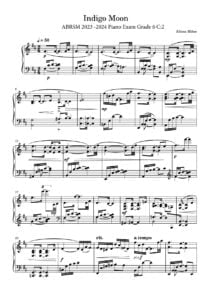 |
|
| ABRSM Piano Exam 2023-24 Jester’s Jig by Chee-Hwa Tan |
 |
|
| ABRSM Piano Exam 2023-24 Love Theme by Catherine Rollin |
 |
|
| ABRSM Piano Exam 2023-24 Minuet In G (Anonymous) |
 |
|
| ABRSM Piano Exam 2023-24 The Song Of Twilight by Yoshinao Nakada |
 |
|
| ABRSM Piano Exam Pieces Grade 1 2013 & 2014 syllabus |
 |
ABRSM Piano Exam Pieces Grade 1 2013 & 2014 syllabus |
| ABRSM Piano Exam Pieces Grade 1 2023 2024 |
 |
ABRSM Piano Exam Pieces Grade 1 2023 2024 |
| ABRSM Piano Exam Pieces Grade 1 2025 2026 |
 |
ABRSM Piano Exam Pieces Grade 1 2025 2026 |
| ABRSM Piano Exam Pieces Grade 2 2023 2024 |
 |
ABRSM Piano Exam Pieces Grade 2 2023 2024 |
| ABRSM Piano Exam Pieces Grade 3 2013 2014 |
 |
|
| ABRSM Piano Exam Pieces Grade 3 2023 2024 |
 |
ABRSM Piano Exam Pieces Grade 3 2023 2024 |
| ABRSM Piano Exam Pieces Grade 3 2025 2026 |
 |
ABRSM Piano Exam Pieces Grade 3 2025 2026 |
| ABRSM Piano Exam Pieces Grade 4 2021 2022 |
 |
ABRSM Piano Exam Pieces Grade 4 2021 2022 |
| ABRSM Piano Exam Pieces Grade 4 2023 2024 |
 |
|
| ABRSM Piano Exam Pieces Grade 5 2023 2024 |
 |
ABRSM Piano Exam Pieces Grade 5 2023 2024 |
| ABRSM Piano Exam Pieces Grade 6 2023 2024 |
 |
ABRSM Piano Exam Pieces Grade 6 2023 2024 |
| ABRSM Piano Exam Pieces Grade 7 2023 2024 |
 |
ABRSM Piano Exam Pieces Grade 7 2023 2024 |
| ABRSM Piano Exam Pieces Grade 8 2023 2024 |
 |
ABRSM Piano Exam Pieces Grade 8 2023 2024 |
| ABRSM Piano Exam Pieces Grade 8 2025 2026 |
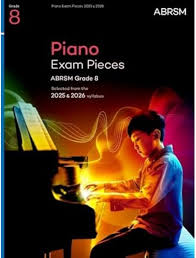 |
ABRSM Piano Exam Pieces Grade 8 2025 2026 |
| ABRSM Piano Mix 3 for Easy Piano Grades 3-4 |
 |
ABRSM Piano Mix 3 for Easy Piano Grades 3-4 |
| ABRSM Piano Prep Test |
 |
|
| ABRSM Piano Scales And Arpeggios from 2021 Guide For Practical Grades |
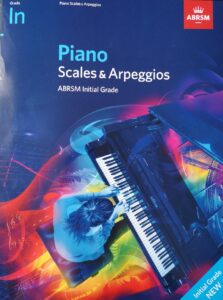 |
|
| ABRSM Selected Piano Exam 2011 2012 Grade 1 |
 |
|
| ABRSM Selected Piano Exam Grade 2 (2011 2012 ) |
 |
|
| ABRSM Specimen Aural Tests Grade 1 to 3 |
 |
|
| ABRSM Specimen Aural Tests Grade 4 & 5 |
 |
|
| ABRSM Teaching notes on piano exam pieces (2013 & 2014) |
 |
|
| ABRSM The Manual Of Scales Broken Chords And Arpeggios For Piano |
 |
|
| ABRSM Theory of Music Exams Grade 8 (The Associated Board of Royal Schools of Music) 2010 |
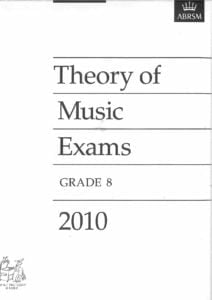 |
|
| AC/DC – Classic – Early Years – High Voltage And Let There Be Rock (Guitar Tab Songbook) |
 |
ACDC – Classic – Early Years – High Voltage And Let There Be Rock |
| AC/DC – Jam With AC/DC (PDF with MP3 audio tracks Guitar Tab Songbook) |
 |
Jam With ACDC |
| AC/DC Rock Score |
 |
|
| AC/DC, Best of (Guitar & Tablature) |
 |
Best Of ACDC (Guitar) |
| Ace Of Base – Beautiful Life | ||
| Ace Of Base – Dont Turn Around | ||
| Ace Of Base – Living In Danger | ||
| Acoustic 33 TOP Guitar Hits (Guitar Songbook) with Tablature – sheet music |
 |
Acoustic 33 TOP Guitar Hits (Guitar Songbook) – sheet music |
| Acoustic Blues Guitar By Kenny Sultan Guitar Tab |
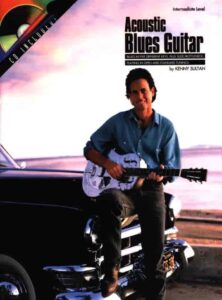 |
Acoustic Blues Guitar |
| Acoustic Blues Guitar Keith Wyatt with TABs |
 |
Acoustic Blues Guitar Keith Wyatt with TABs |
| Acoustic Blues Guitar Styles (Larry Sandberg) (with Tablature) |
 |
Acoustic Blues Guitar Styles (Larry Sandberg) |
| Acoustic Classics 42 songs Piano Vocal Guitar |
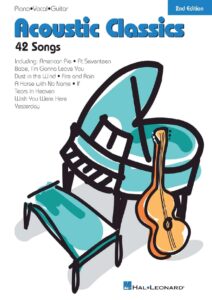 |
Acoustic Classics 42 songs Piano Vocal Guitar |
| Acoustic Guitar Bible (35 great songs) Guitar with TABs |
 |
Acoustic Guitar Bible (35 great songs) Guitar with TABs |
| Acoustic Rock (Guitar) Rolling Stones, Green Day, Pink Floyd, Bob Dylan (Songbook Guitar Tab) with Tablature |
 |
|
| Acoustic Rock 90’s, Best of – Guitar with Tablature |
 |
Acoustic Rock 90’s, Best of – Guitar |
| Acqua azzurra acqua chiara (Battisti) | ||
| Ad Te Levavi (Musescore File).mscz | ||
| Adagio (Lara Fabian) | ||
| Adagio MP3.zip | ||
| Adah’s Theme (La femme avec les yeux lumineux) Sex and the City |
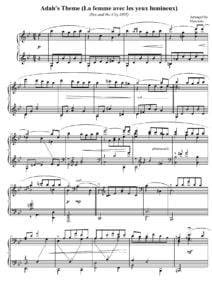 |
|
| Adah’s Theme (Le femme avec les yeux lumineux) Sex and the Cit | ||
| Adam – Adolphe Charles Holy Night Cantique-Nöel |
 |
|
| Adam – Cantique de Nöel Minuit Chretiens | Adam – Cantique de Noel Minuit Chretiens VS | |
| Adam – Derniers souvenirs d’un musicien |
 |
|
| Adam – O Holy Night | Adam – O Holy Night | |
| Adam – Souvenirs d’un musicien |
 |
|
| Adam (Cappeau) – Cantique de Noël. Easy Piano with voice or instrument (Paroles and lyrics) |
 |
Adam-Cappeau-Cantique-de-Noel- |
| Adam (Cappeau) – Cantique de Noel. Easy Piano with voice or instrument.mscz | ||
| Adam Cantique de Nöel Christmas song | Adam Cantique de noel | |
| Adam Carse – The History Of Orchestration Adam Carse |
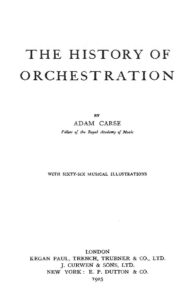 |
|
| Addams Family Theme (Musescore File).mscz | ||
| Addams Family Theme (Easy Piano) |
 |
|
| Addio Colonnello (Ennio Morricone) | ||
| Adele Songs from the Album 21 For SATB, SSA and Piano |
 |
Adele Songs from the Album 21 |
| Adele – 21 |
 |
ADELE 21 SONGBOOK |
| Adele – Chasing Pavements Piano Vocal guitar chords |
 |
|
| Adele – Easy on me (Piano solo with lyrics) |
 |
|
| Adele – Rolling in the Deep |
 |
|
| Adele – Rumor Has It |
 |
|
| Adele – Set Fire to the Rain |
 |
|
| Adele – Set Fire To The Rain (2) (Musescore File).mscz | ||
| Adele – Someone Like You | Adele – Someone Like You | |
| Adele – Someone Like You easy piano |
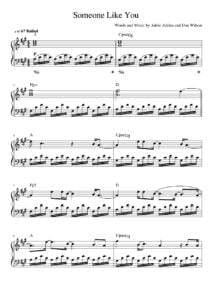 |
|
| Adele – The Best Of SongBook (12 songs arranged for easy piano) |
 |
Adele – The Best Of SongBook (12 songs arranged for easy piano) |
| Adele 19 [Piano, Guitar, Vocals] |
 |
Adele 19 [Piano, Guitar, Vocals] |
| Adele 25 Songbook |
 |
Adele 25 Songbook Contents —  |
| Adele Best Of Adele Big Note Piano (Adele Adkins) |
 |
Adele Best Of Adele Big Note Piano (Adele Adkins) |
| Adele Easy On Me Sheet Music |
 |
|
| Adele Original Keys For Singers (Adele) |
 |
Adele Original Keys For Singers (Adele) |
| Adele Skyfall (Piano Vocal Guitar Chords) | Adele Skyfall (Piano Vocal Guitar Chords) | |
| Adios Amor – Goodbye My Love as recorded by José Feliciano |
 |
|
| Adult All In One Course Level 1 With Audio Mp3 (Willard Palmer) |
 |
Lessons Alfred’s Basic Adult Piano Course Level 1 |
| Adult All In One Course Level 2 With Audio Mp3 (Willard Palmer) |
 |
Willard Palmer – Adult All-In-One Course Level 2 |
| Adult Greatest Movie Hits Piano Level 1 |
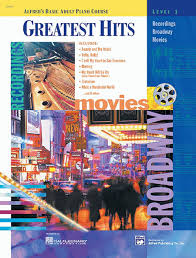 |
Adult Greatest Movie Hits Piano Level 1 |
| Adult Piano Adventures ALL-IN-ONE PIANO COURSE 1 |
 |
|
| Adult Piano Adventures All-In-One Piano Course Book 2 Book With Media Online (Nancy Faber, Randall Faber) Sheet Music |
 |
|
| Adult Piano Adventures Christmas – Book 1 (Nancy Faber Randall Faber) |
 |
|
| Adult Piano Adventures Christmas – Book 2 |
 |
Adult Piano Adventures Christmas – Book 2 |
| Adult Piano Adventures Popular Book 1 – Timeless Hits and Popular Favorites (Adult Piano Adventures Popular) |
 |
Adult Piano Adventures Popular Book 1 – Timeless Hits and Popular Favorites (Adult Piano Adventures Popular) |
| Adult Piano Course Greatest Movie Hits Piano Level 1 Recordings Broadway Movies |
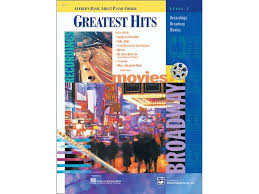 |
Adult Piano Course Greatest Movie Hits Piano Level 1 Recordings Broadway Movies |
| Advanced Harmonic Concepts by Wayne Naus (with audio MP3) |
 |
Advanced Harmonic Concepts by Wayne Naus |
| Advanced Harmonic Exercises For Jazz Piano |
 |
advanced harmonic exercises |
| Advanced Piano Solos 1 Encyclopedia by Tom Roed |
 |
Advanced Piano Solos 1 Encyclopedia by Tom Roed |
| Advanced Piano Solos 2 Complete by Tom Roed |
 |
Advanced Piano Solos 2 Complete by Tom Roed |
| Advanced Sacred Music Piano Solos by John Kraus |
 |
|
| Advanced Scale Concepts and Licks for Guitar (PDF + MP3 audio tracks Play Along) with Tablature |
 |
 |
| Aebersold – 110 – When I fall In Love – Romantic Ballads pdf with embedded audio MP3 Tracks |
 |
Jazz Play Along Vol 110 [When i Fall in Love] |
| Aebersold – 113 Embraceable You – Vocal Standards with audio MP3 Tracks |
 |
Jamey Aebersold – Vol 113 |
| Aebersold – 30 blues scale By Jamey Aebersold | Aebersold – 30 blues scale By Jamey Aebersold | |
| Aebersold – A New Approach To Jazz Improvisation Gettin’it together vol. 21 |
 |
aebersold gettin all together vol 21 |
| Aebersold – Practice Procedures For Memorizing Scales And Chords | Aebersold – Practice Procedures For Memorizing Scales And Chords | |
| Aebersold – Rapid Reference Vol 1-114 | Aebersold – Rapid Reference Vol 1-114 | |
| Aebersold – Vol 01 – How to Play and Improvise Jazz (with audio MP3) |
 |
Aebersold – Vol 01 – How to Play and Improvise Jazz |
| Aebersold – Vol 03 – The II-V7-I Progression Jazz Play Along Book + Audio Mp3 |
 |
|
| Aebersold – Vol 105 – Dave Brubeck Jazz Play Along Book + Audio Mp3 |
 |
|
| Aebersold – Vol 118 – [Groovin Jazz] (with audio MP3) |
 |
|
| Aebersold – Vol 32 – Ballads Jazz Play Along Book + Audio Mp3 |
 |
|
| Aebersold – Vol 34 – Jam Session Jazz Play Along Book + Audio Mp3 |
 |
Includes MP3 Play along themes as Blue moon, The shadow of your smile, Over the rainbow, etc. |
| Aebersold – Vol 45 – [Bill Evans] Jazz Play Along Book + Audio Mp3 |
 |
Aebersold – Vol 45 – [Bill Evans] |
| Aebersold – Vol 58 – Unforgettable Standards Jazz Play Along Book + Audio Mp3 |
 |
aebersold unforgettable standards sheet music |
| Aebersold – Vol 76 – David Baker – How To Learn Tunes (A Jazz Musician’s Survival Guide) |
 |
how to learn tunes |
| Aebersold 25 How To Practice By Jamey Aebersold | Aebersold 25 | |
| Aebersold Antonio Carlos Jobim Vol 98 – Bossa Nova Songbook Jazz Play Along Book + Audio Mp3 |
 |
Aebersold Antonio Carlos Jobim Vol 98 – Bossa Nova Songbook |
| Aebersold Anyone Can Improvise – 52 Points To Remember | Aebersold Anyone Can Improvise – 52 Points To Remember | |
| Aebersold Jazz EAR training (with audio MP3) |
 |
Aebersold Jazz EAR train |
| Aebersold Jazz Handbook 09 Tips For Learning A New Tune & Practice Procedures For Memorizing |
 |
Aebersold Jazz HANDBOOK |
| Aebersold Jazz Play-Along Books & audio MP3 1st Part Full Collection – Vol 1- 40 (with MP3) for all instruments |
Compressed file  Aebersold Full Collection Part 1 – Vol 1- 40 Aebersold Full Collection Part 1 – Vol 1- 40 |
40 volumes with MP3 Aebersold Book Index Vol.001-106 |
| Aebersold Jazz Play-Along Books & audio MP3 2nd Part Full collection Vol 41- 75 for all instruments | Compressed fileAebersold Full Collection Part 2 – Vol 41- 75.. | 35 volumes with MP3 Aebersold Book Index Vol.001-106 |
| Aebersold Jazz Play-Along Books & audio MP3 3rd Part Full Collection – Vol 76- 112 (with MP3) | Compressed fileAebersold Full Collection Part 3 – Vol 76- 112 | 37 volumes with MP3 Aebersold Book Index Vol.001-106 |
